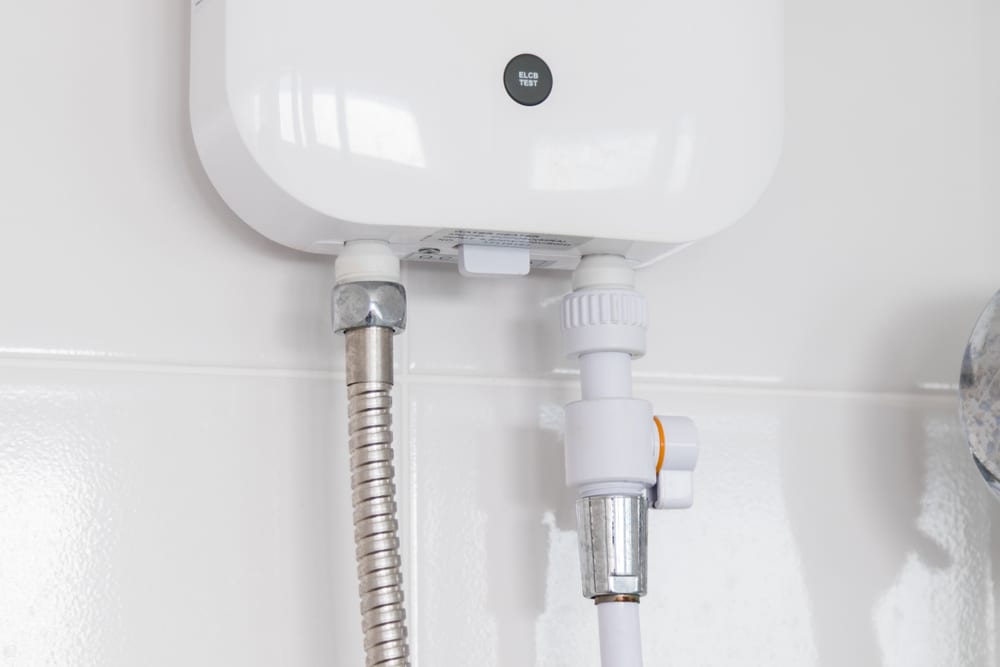
Purchasing a tankless water heater is a smart way to reduce the total cost of your utility bills each month. This type of water heater is designed to produce hot water as it’s needed in your household. Unlike a traditional tank water heater, a tankless water heater does not utilize a continuous supply of natural gas and electricity to heat water in a tank. Instead, a tankless system creates warm water instantly and distributes it to the fixtures, showers, and appliances in your home. Although a tankless water heater is convenient, it will require recurring maintenance to operate efficiently. To help you extend the life of your system, we have compiled a list of tips to help you perform maintenance on your tankless water heater.
Table of Contents
How to Maintain a Tankless Water Heater
Flush the Tankless Water Heater
While a majority of people are aware of the importance of flushing a traditional tank water heater, a large number of consumers are unaware of the usefulness of flushing a tankless water heater. Ejecting the water in your system every 2 to 3 years is essential to remove a build-up of sediment on the burners in your tankless water heater. In addition, draining the water in your water heater will help reduce the amount of times you need to clean your aerators. To help you maintain your system, we have compiled a list of steps to follow when you are flushing your tankless water heater.
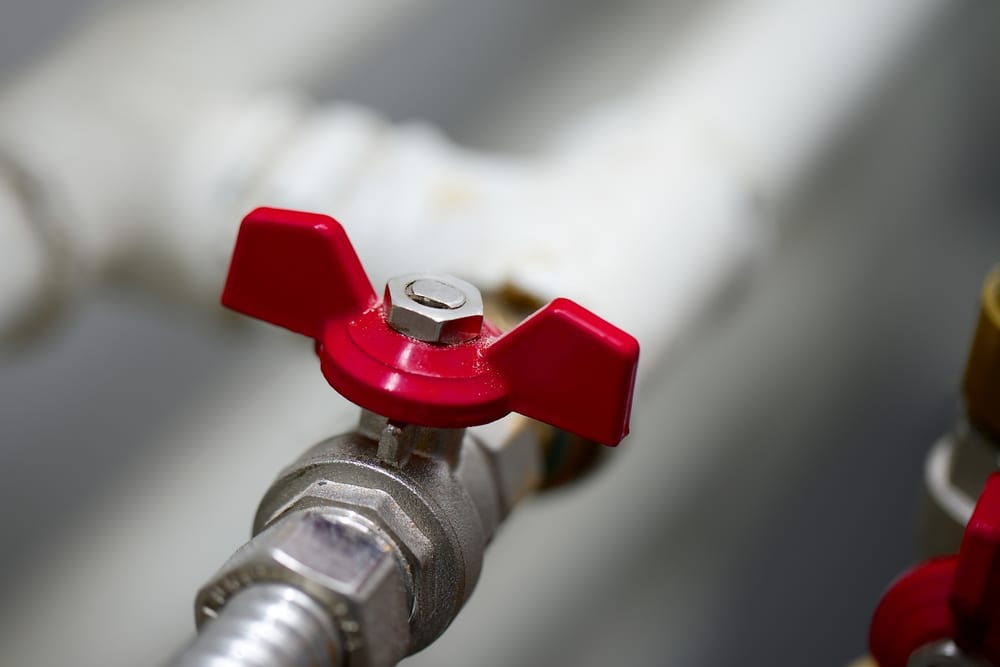 Step 1: Remove the Access Panel & Deactivate the Gas
Step 1: Remove the Access Panel & Deactivate the Gas
The first step of flushing your water heater is to remove the access panel on the front of the system. Once the panel is removed, locate the draining valves. If your water heater does not have draining valves, you will need to purchase them at a hardware store or call a certified technician to install them.
Next, you will need to deactivate the natural gas connection to prevent a toxic gas leak while you are ejecting water in your system. To deactivate the gass, turn the gas valve to an upright position to the gas line. In addition, it’s important to disconnect the power prior to conducting maintenance on your tankless water heater.
Step 2: Turn Off the Cold & Hot Water Connections
Use the water valve to turn off the hot water connection. Closing the hot water valve will stop the circulation of warm water from the tankless water heater to your home. Next, deactivate the cold water valve to prevent a water leak while you are draining the system.
Step 3: Open the Drainage Valves & Grab a Water Bucket
Disassemble the covers on the drainage valves to alleviate pressure in the valves. Next, use pliers to secure a water hose to the drainage valves on your tankless water heater. Once the hose is connected, adjust the drainage valves to a perpendicular angle to the cold and warm water valves.
In addition, you will need to grab a bucket and a sediment cleaning solution. If you do not have a sediment cleaning solution, you can use distilled vinegar to remove limescale on the interior of your tankless water heater.
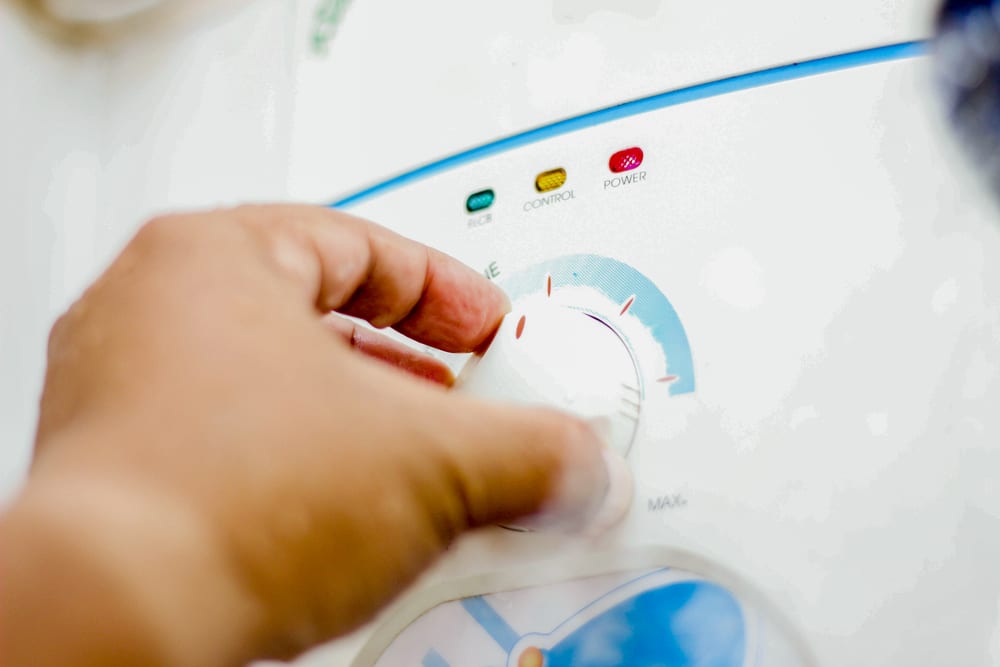 Step 4: Use a Pump to Distribute a Cleaning Solution to the Tankless Water Heater
Step 4: Use a Pump to Distribute a Cleaning Solution to the Tankless Water Heater
After you fill a bucket with a chemical solution or distilled vinegar, use a pump to distribute the chemical solution into the tankless water heater. Keep the pump activated for 30 minutes or longer to circulate the sediment cleaning solution through the pipes in the water heater. Please note, you will need to operate the pump for a longer period of time if you’re using distilled vinegar to clean your system.
Step 5: Circulate Water to Remove Chemicals in the Tankless Heater
Once the pump has been operating for 30 minutes or more, deactivate it and dispose of the chemical cleaning solution in your bucket. Next, fill the bucket with sanitary water and activate the pump to remove any remaining chemical cleaning solution in the tankless water heater. Keep the pump on until the water exiting the water heater is clear. When you are finished flushing your tankless water heater, dispose of the water and cleaning solution in the bucket.
Step 6: Disconnect the Water Hose & Attach the Covers to the Valves
When you are finished performing maintenance on your tankless water heater, disconnect the water hose from the drainage valves. Next, replace or reattach the covers to the drainage valves of the water heater. When you are finished attaching the covers to the valves, use a screwdriver to remove and inspect the in-line filter for excess limescale. Use a rag to clean the filter before you reattach it to the water heater.
Step 7: Activate the Cold & Warm Water Supply Valves
Rotate the cold and warm water supply valves to restore the circulation of water to the tankless water heater. The valves should be parallel to the water pipes in your system. Next, adjust the gas valve to activate the natural gas connection to the water heater. In addition, you will need to restore the power or electricity to your system before using it.
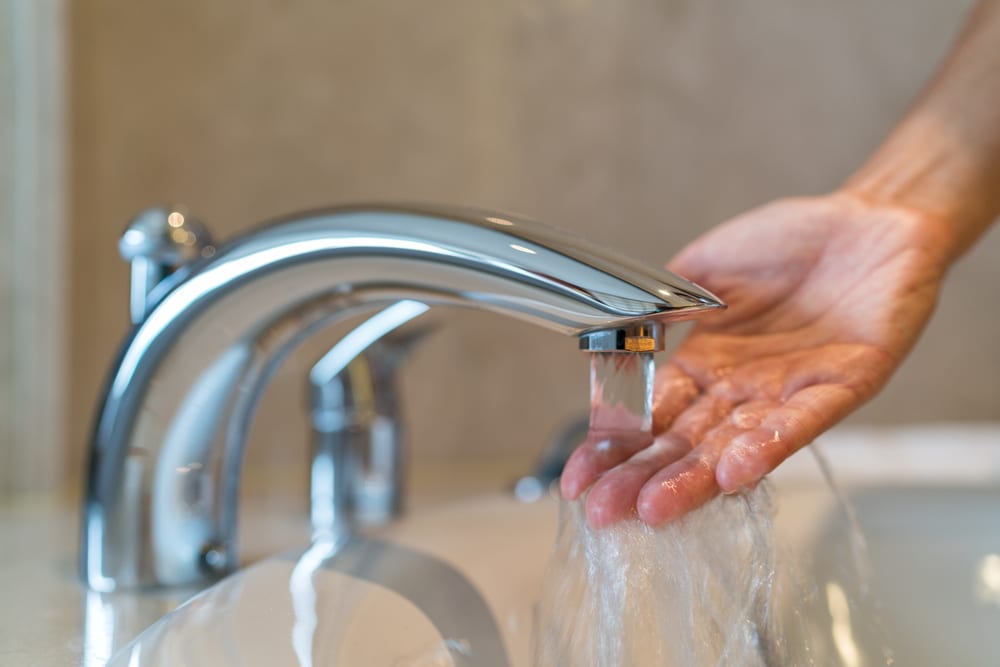 Step 8: Turn Your Sink On
Step 8: Turn Your Sink On
Turn your sink on to remove extra air in your water pipes. It may take up to 3 minutes to remove the air in your pipes. Once the air has exited your pipes, activate the hot water settings on your sink to confirm your tankless water heater is heating the water correctly.
Clean the Internal Parts & Components
As a tankless water processes and circulates water, a build-up of minerals will start to form on the parts in your system. Once the collection of sediment becomes severe, you will need to perform maintenance and disassemble the tankless water heater to sanitize the internal parts. A majority of suburbs and cities in the nation have access to hard water that is consumed or utilized to operate appliances such as washing machines, boilers, and water heaters.
Although you may live in an area that does not have hard water, all tap water has a small concentration of calcium or magnesium that can cause limescale to collect in your appliances. Performing maintenance on your tankless water heaters is a simple way to prevent clogs in water pipes and other parts in your system. To reduce the amount of sediment in your water heater, you may need to invest in an inline filter.
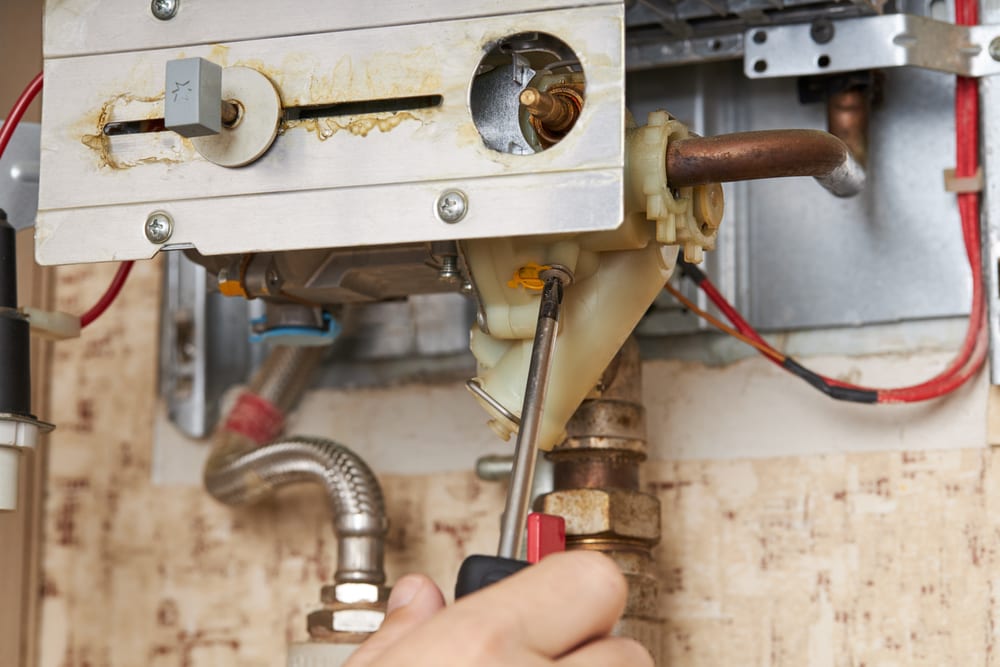 Purchase the Correct Supplies & Tools
Purchase the Correct Supplies & Tools
Prior to flushing your tankless water heater, you will need to purchase a bucket, descaling cleaning agent, water hoses, and a submersible pump. You can buy a water heater kit from your local hardware store that includes the correct supplies and tools.
Clean the Air Filter
To clean the air filter, deactivate the tankless water heater by unplugging it. Next, disassemble the access panel on the front of the system to gain access to the air filter. Depending on the model, the air filter will be configured near the top of the tankless water heater. Disconnect the air filter and perform a visual inspection to confirm whether or not it’s contaminated with sediment.
If the filter is dirty, use a warm rag or brush with soap and water to remove the excess contaminants and limescale. Before reattaching the air filter in the water heater, give it 30 minutes to an hour to dry. Once the filter is clean and dry, the next maintenance step is to attach the air filter to the tankless water heater. Next, reassemble the access panel and activate the power to your water heater. When you are finished cleaning your system, turn on a sink in your home to confirm the tankless water heater is working properly.
Purchase an In-Line Filter
Some energy-efficient tankless water heaters are equipped with built-in filters. To confirm if your water heater features a filter, you will need to remove the front access panel. If your water heater does not have an in-line filter, you will want to consider investing in a filter to remove harmful contaminants from the water. Purchasing a miniature in-line filter can help reduce the total amount of times you need to flush your water heater or perform maintenance each year.
In addition, cartridge filters can be installed in your water heater to reduce the build-up of magnesium and calcium in your system. The most effective way to protect your tankless water heater from the negative consequences of hard water is to buy a whole-house water filter. This type of water filtration system is designed to remove sediment before it is distributed to the fixtures and appliances in your home.
If you are having issues with your tankless water heater, give our team of licensed plumbers a call by phone at (904) 217-5694 to schedule an appointment. We offer tankless water heater installation services to homes in Jacksonville and other areas of Florida. In addition, our team of technicians offers other types of emergency plumbing services such as sump pump installation, drain cleaning, and water heater repair.

